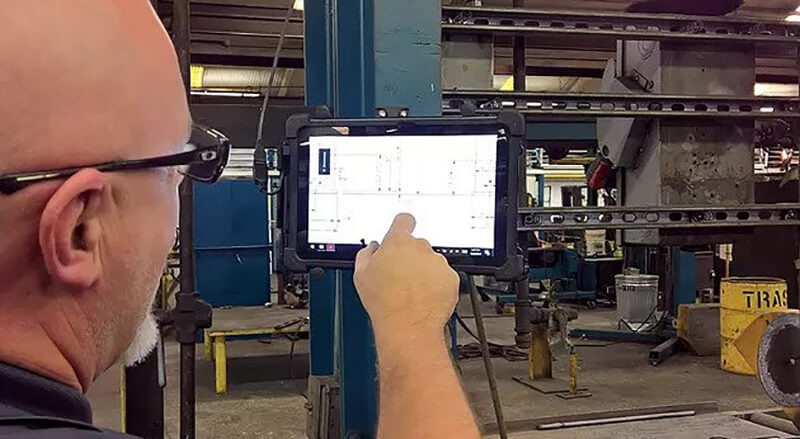Okay, we can all agree that we live in a smartphone age. Very few of us can live without our smart device right next to us.
We use it as our primary form of communication. Using a smart device has overtaken face-to-face communication at home and at work.
But, one question is why aren’t smart devices having a more prominent role on the manufacturing floor? Especially when you consider how interactive things like tablets can be in an automated world.
I know, I said the bad word … tablets.
Think about it though. Tablets have the compatibility to control everything from your television to your home security system and most things in between. So, why couldn’t they be relied upon to control robots on the manufacturing floor?
A recent article by William Aja, vice president of customer operations for Panacea Technologies, Inc. suggests that moving forward, tablets could have a much more dominant role in controlling factories of the future.
The fact that tablets strong human-machine interface (HMI) compatibility is the main reason for why tablets should be considered for factories either coming online or attempting to upgrade to modern technologies.

Another factor here is the human training element. Manufacturers are consistently wanting to find new and inventive ways to train their current workforce on innovative technology. Introducing modern technology makes that learning curve much steeper. So, it begs the suggestion: Why not introduce technology that the workforce is already familiar with, even it is on a consumer level?
Rather than investing in untested technology, it seems to be more prudent for manufacturers to find ways to implement existing technology to control both current and new systems being introduced to the factory floor.
The fact that there are tools available that can be implemented on tablets which allow programmers to get the what they want, when they want it and it allows segmented access ensuring that the right programmers are getting the right access.
Aja also found that SCADA (supervisory control and data acquisition) packages can allow logins and credentials to automatically tie back to Windows domain and that geofencing is enabled to allow access to be based on location on the factory floor. This brings with it a certain amount of security that can put manufacturers at ease meaning the platforms aren’t just open to everyone. If you in a certain area of the floor, you are only able to access a specific item in that area of the floor. Access can be controlled so that even if you went to a different area of the plant, you would not be able to access that area’s items unless you were given access to it.

Want to give easy access? With a tablet this can be as simple as utilizing QR codes on a machine and allowing the user to take a picture of that code to allow the access, but only if they are within the geofence established by your own protocols.
Using a tablet also saves money. You are no longer tied to physical HMIs and, if a tablet breaks, replacing it can take a matter of minutes rather than a matter of days
Want to upgrade? Tablets provide a much cheaper option than upgrading an entire HMI unit. From box to deployment of a new tablet can be much more cost- and time-efficient than spending dollars on new HMIs.
Now, don’t get me wrong, tablets aren’t meant to be a complete replacement, but more of an augmentation to your current manufacturing floor control strategy.
You have ease of training, cost effectiveness and efficiency in use. Couple all of that with the ability to install security protocols that keep your programs and machines safe from accidental use and you have a combination that seemingly makes sense.
We are all already using smart devices in our everyday lives. It only makes sense to start incorporating them more into the workplace.

